- History / Culture
- Gourmet
Kobe Starter Pack: A First-Timer's Journey Through History and Culture
Contributor : Kristina
Despite being just a few shinkansen stops away from Kyoto and Osaka, foreign tourists often overlook Kobe—the heart of Hyogo Prefecture. And that`s a shame since Kobe, a city of contrasts, has so much to offer! This city truly has something for everyone, from its stunning panoramic vistas of mountains and sea to its rich international history, culinary scene, and fantastic vintage shops. I visited this vibrant city to create the perfect one-day itinerary for first-time visitors. Let's dive in!
The easiest way to start your journey in Kobe
Kobe is known for its sloping streets and breathtaking sea views, which give the city a familiar yet unique charm. These hilly landscapes enhance Kobe's visual appeal and offer plenty of opportunities for unforgettable adventures and discoveries!
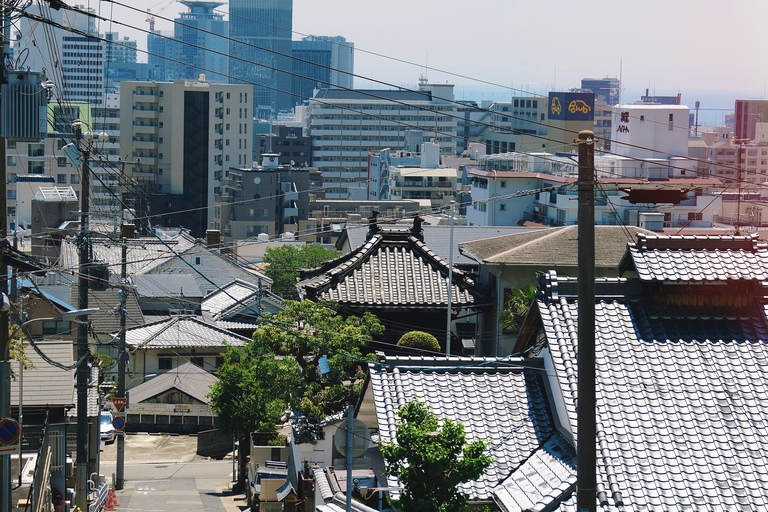
View of Kobe from the top of Kitano Ijinkan-Gai District
My journey through Kobe started at Shin-Kobe Station, a busy transportation hub that serves as the city's gateway. Conveniently connected to major cities like Tokyo, Kyoto, and Osaka via the Shinkansen (bullet train), Shin-Kobe Station provides easy access for travelers from near and far.
Since the station is located at the top of a hill, it's a perfect starting point for exploring Kobe. All you need to do is walk downhill. While strolling around the city feels wonderful, another option is taking the CITY LOOP & Port Loop buses, conveniently stopping at all the major sightseeing attractions in Kobe.
After arriving at Shin-Kobe Station, your adventure in Kobe takes an exciting turn. You can explore one of my favorite parts of the city: Kitano Ijinkan-Gai. This charming district is filled with architectural wonders and is just a 10-minute walk from the station, nestled at the foot of Mount Rokko.
The International Legacy of Kobe in Kitano Ijinkan-Gai District
The story of Kitano Ijinkan-Gai dates back to the late 19th century when Kobe emerged as one of Japan's first ports opened to foreign trade. Western merchants, diplomats, and other expatriates flocked to the city, bringing their distinctive architectural styles and cultural influences.
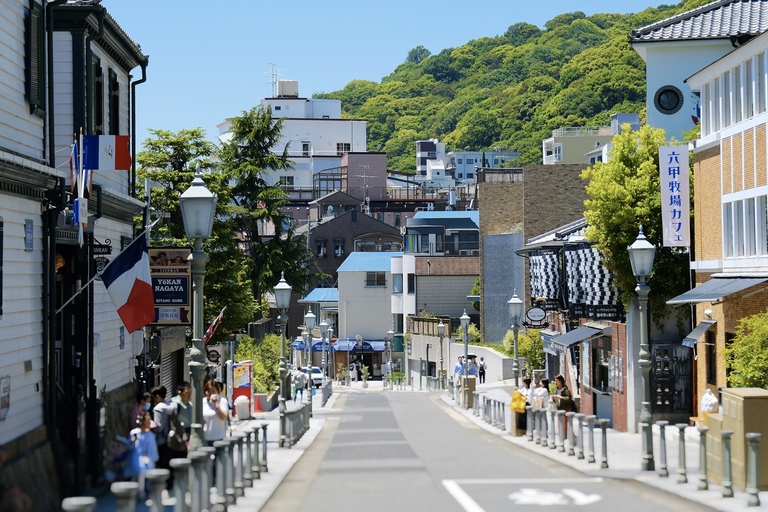
Kitano-dori, the main street of the Ijinkan area
The influx of foreigners following the port's opening led to a shortage of land in the designated foreign settlement area. To address this, the Meiji government allowed mixed residency with Japanese in a limited area and developed north-south roads extending from the settlement to the hills.
This led to establishing Ijinkan, or foreign residences, on the scenic hills that offered port and city views. Over 200 Ijinkan were built from the Meiji era (1868-1912) to the early Showa period (1926-1989), characterized by verandas, clapboard exteriors, bay windows, shutters, and red brick chimneys. From English Tudor and French Renaissance to Swiss chalet and American colonial, each ijinkan tells a unique story of its former occupants and their connection to Kobe's cosmopolitan past.
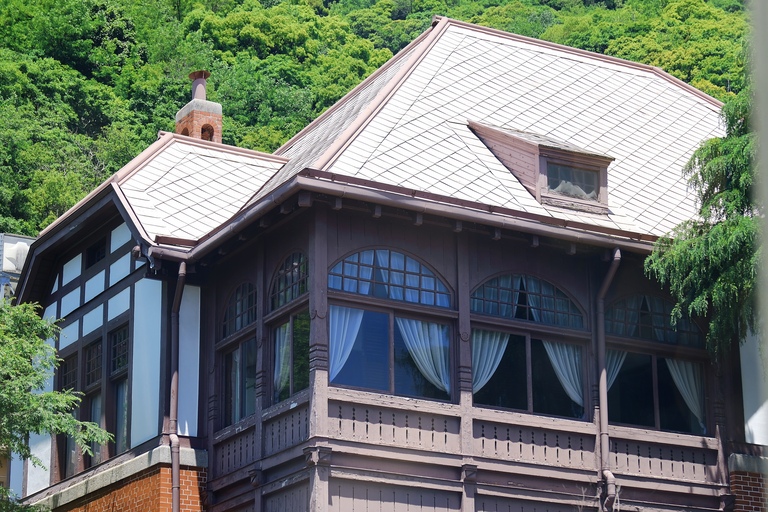
Weathercock House built for German trader, G. Thomas
Today, strolling through the picturesque streets of Kitano Ijinkan-Gai feels like stepping back in time. As you admire the graceful facades of these historic homes, you can't help but imagine the lives of the families who once lived within their walls, shaping the cultural landscape of Kobe. I will explore this historic part of the city in my next article, leaving some interesting facts for next time!
Kobe’s vibrant Chinatown - a place to go for food lovers!
After walking around the hills of Kitano Ijinkan-Gai, it was time to move on to the lower part of the city. I took the long Tor Road, which led me straight through the heart of Kobe toward the port. Soon, the elegant facades of the buildings changed to the colorful and lively atmosphere of another international part of the city—Nankinmachi.
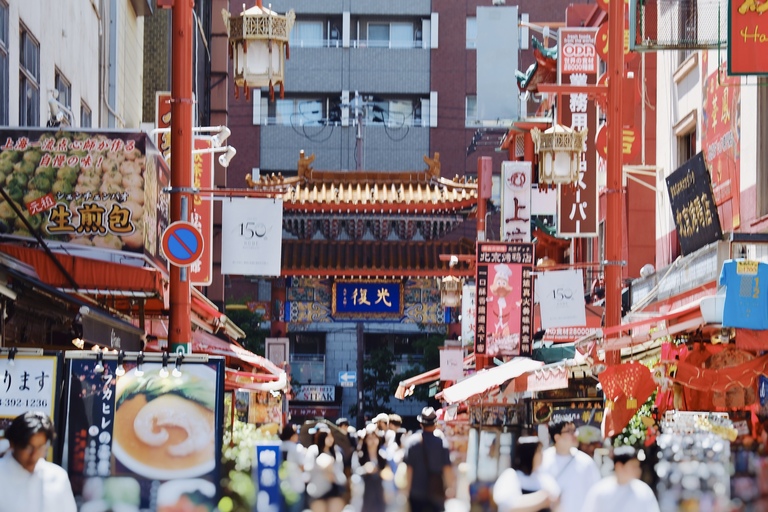
Colorful streets of Nankinmachi
The origins of Nankinmachi can also be traced back to the opening of Kobe Port in 1868. China had not signed treaties with Japan then, so Chinese immigrants could not live in the designated foreign settlement. Instead, they settled just west of this area, establishing shops, restaurants, and businesses. This led to the area becoming known as Nankinmachi, reflecting its Chinese influence.
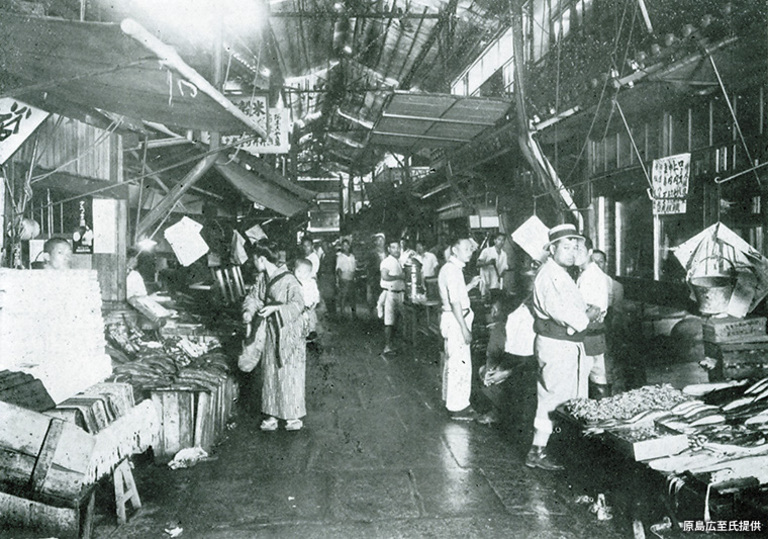
The image depicts Chinatown during the early Showa period
By the early Showa period, Nankinmachi had earned a reputation as "Kansai's kitchen," bustling with activity and commerce. However, the devastation of Kobe during the air raids of World War II left much of the area in ruins. In the aftermath, Nankinmachi became a black market and later a street lined with foreign bars, becoming a less savory part of the city.
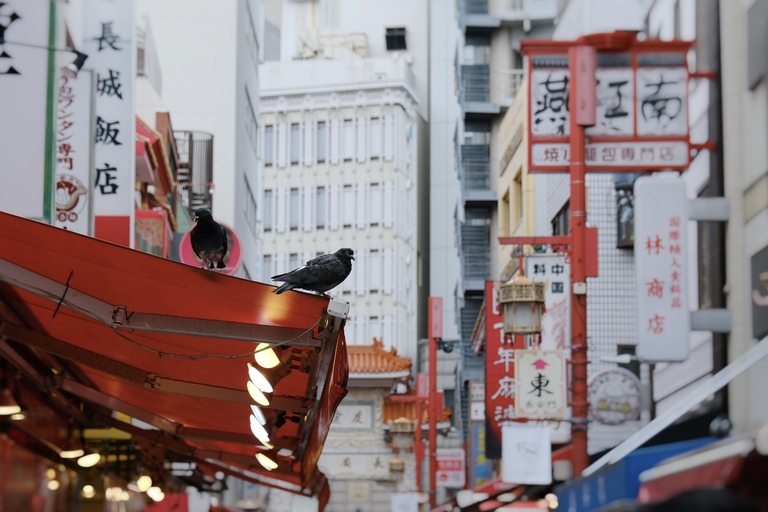
This part of Kobe remains lively even on rainy days
In the 1970s, efforts to revitalize Nankinmachi began with establishment of the Nankinmachi Shopping Street Promotion Association. The community worked diligently to restore the area, embracing its identity as a Chinatown and developing it into the vibrant cultural hub it is today. Nankinmachi is now one of Japan's three major Chinatowns (the other two are located in Yokohama and Nagasaki).
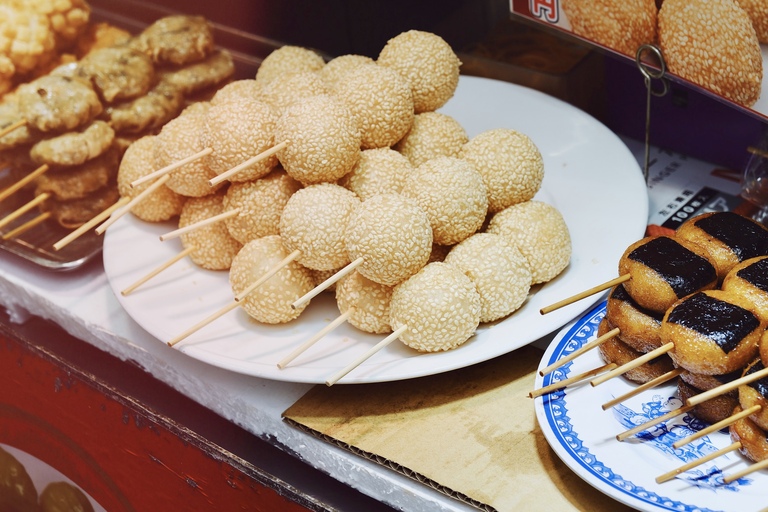
Various types of fried Chinese pastries and snacks
Though smaller than Yokohama's Chinatown, Nankinmachi offers an authentic and lively atmosphere that attracts many visitors. Stretching approximately 300 meters from end to end, Nankinmachi is lined with shops selling a variety of Chinese dishes such as pork buns, xiaolongbao (soup dumplings), sesame balls, and sweets like Kobe pudding. Additionally, many restaurants in Nankinmachi offer unique dishes incorporating Kobe beef, adding a local twist to traditional Chinese cuisine.
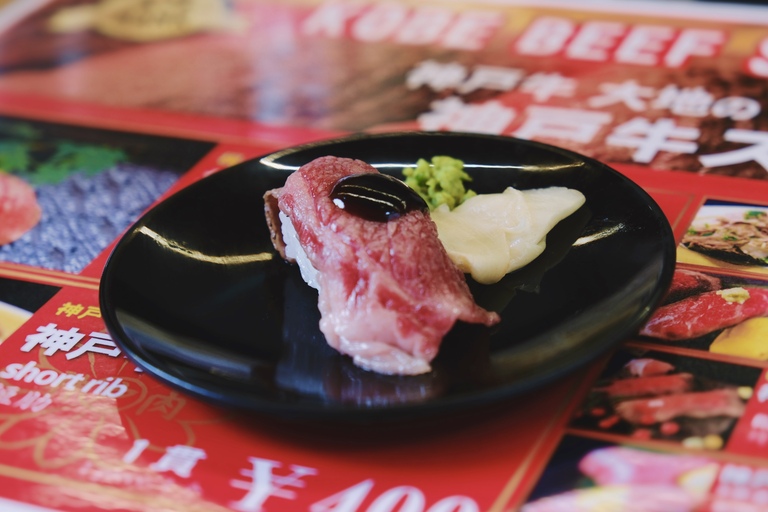
Exquisite sushi made with Kobe Beef
The sheer number of options means more than a day is needed to explore everything!
I will be coming back again and again to try more food.
Discovering Kobe Port from the Water
After grabbing a quick bite in Chinatown, I continued my walk to Kobe Port, which celebrated its 155th anniversary in 2022.
After Japan opened its doors to the world, Kobe Port thrived as an international trade port, and by 1893, it had the highest import volume in Japan. Now, it`s one of the favorite areas for residents and tourists to take a leisure stroll or rest at one of the cafes. But I decided the best way to experience the port was to see it from a distance—and that's how I ended up on a 60-minute cruise aboard the cruise ship "boh boh KOBE."
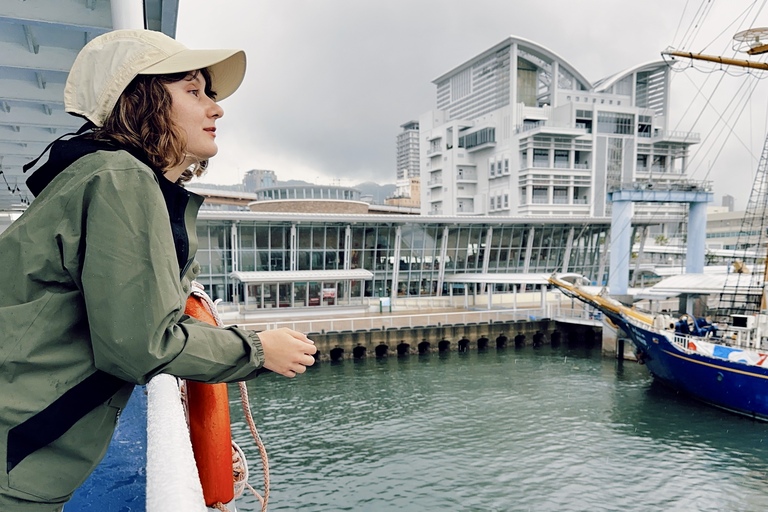
On board the cruise ship "boh boh KOBE"
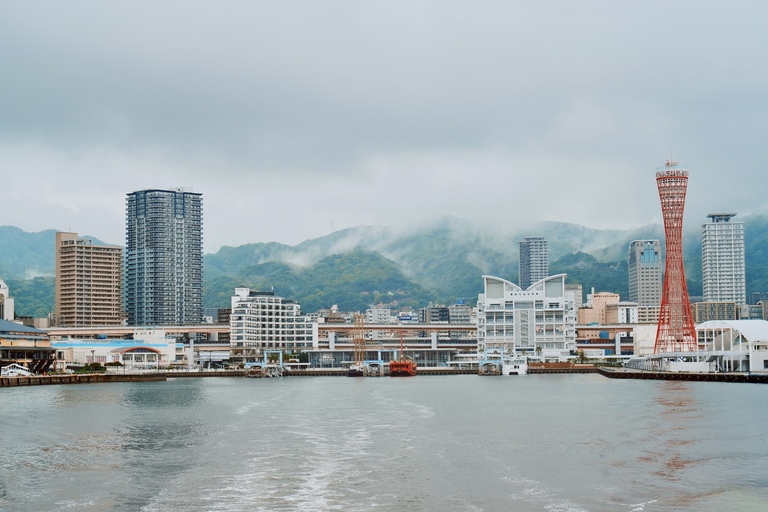
Although the weather wasn't great that day, the views from the upper deck were breathtaking—the Rokko Mountains and the iconic Kobe Port Tower looked magical in the rain clouds. I stood alone, watching the port fade into the distance—it felt almost like a dream. I was also lucky to see planes landing near Kobe Airport. The captain chooses the route to match the airplane schedules so that you can enjoy this magical view, too!
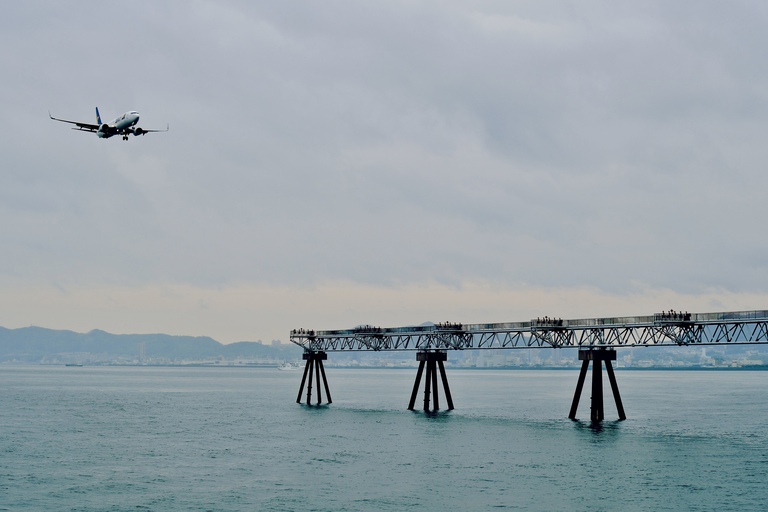
Watch planes land near Kobe Airport from the upper deck
On weekends, "boh boh KOBE" also offers sunset trips with drinks made with herbs grown on board and dishes supervised by the Michelin-starred Kyoto restaurant SEN. The special anago rice bowl with shredded omelet and unique sansho soy sauce was served this time. The menu changes every month, so check their official site for updates!
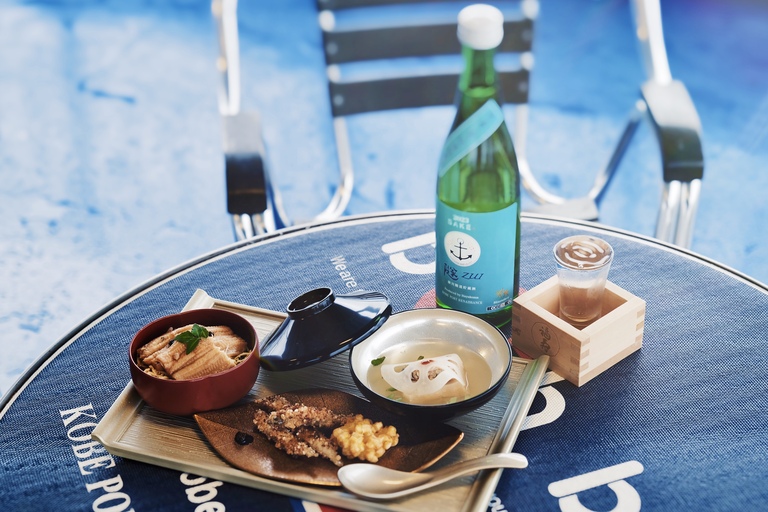
The special anago rice bowl with unique sansho soy sauce
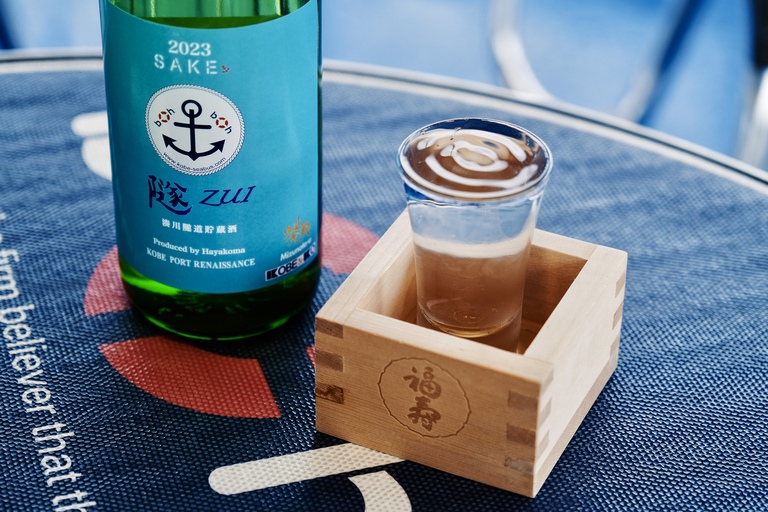
Sake with a history from Minato-machi Kobe - "Zui"
If you love sake, try the one created especially for this cruise—the "ZUI." You can enjoy a glass with food from the café on the first floor or buy a bottle as a souvenir.
The best part of this cruise is that you don’t have to book it in advance. You can buy the ticket on the spot and enjoy the experience spontaneously.
The Birthplace of Japanese Coffee Culture
From the above, you probably gathered that Kobe is an international city that embraced Western culture early on with the opening of its port. Among the many new things that arrived through the port was coffee. It seems strange to talk about coffee culture in a country like Japan, which is stereotypically considered a country where tea is the main staple. But today, Japan represents the fourth largest country in total coffee consumption among importing countries, with 7,355,000 bags of coffee consumed in 2023.
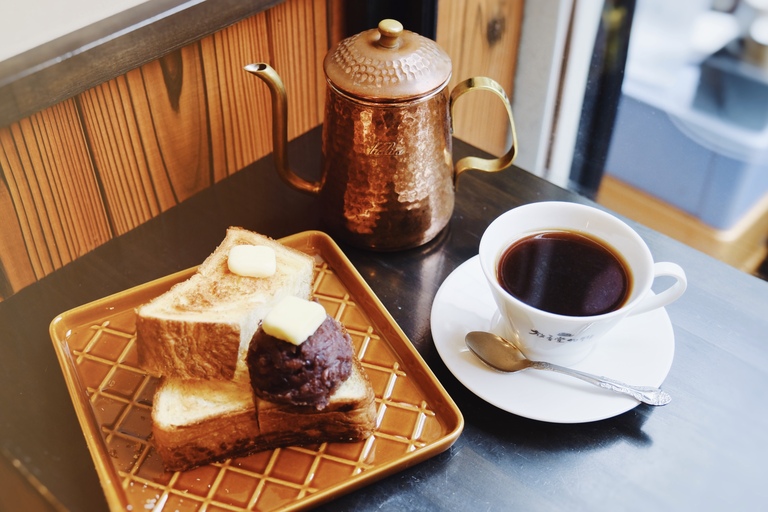
Hokodo Coffee in Kobe is Japan's first and oldest coffee shop
Kobe began importing coffee beans during the Meiji era (1868-1912), and it quickly became a popular drink in Japan. Walking through the city, you’ll often see signs for various coffee shops, a testament to the city’s deep connection to coffee culture.
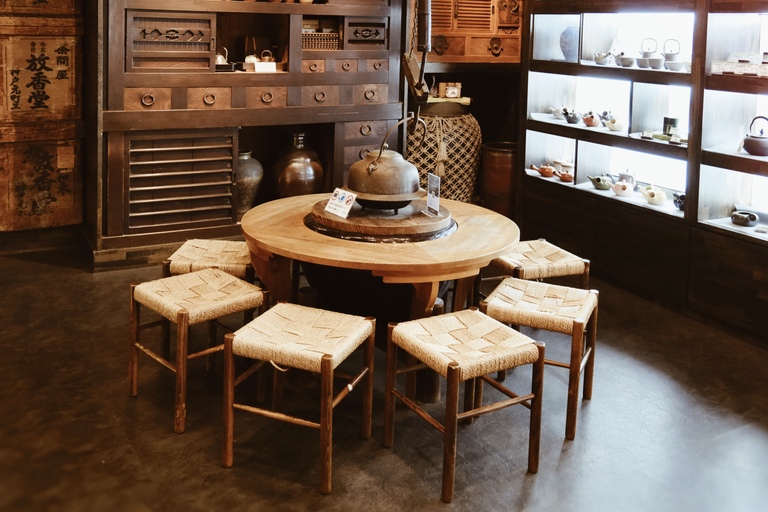
Hokodo Coffee sells both Japanese tea and coffee
Moreover, if you come to Kobe, you can visit Japan’s first and oldest coffee shop. Here, you will find an answer to why dark roast is so prevalent in Japan. The answer is simple - when coffee first made its way to Japan, it was difficult to find metal for coffee grinders, leading to stone mills for grinding (you can see those mills in Kobe coffee shops).
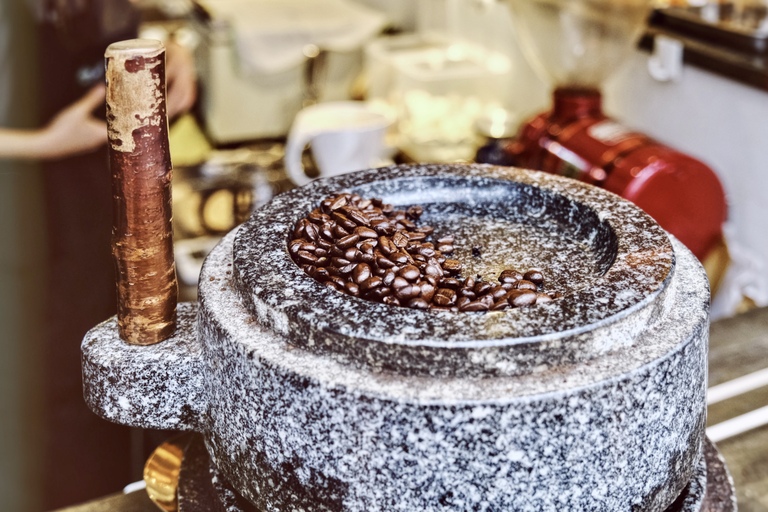
The stone mill at Hokodo Coffee
Lightly roasted coffee beans were more challenging to grind in stone mills, so the dark roast became the default. Stone mills also grind coffee more slowly and unevenly than metal grinders. As a result, the combination of dark roasting and grinding in stone mills led to the rich, bold flavors characteristic of Japanese coffee. This preference for dark roast became deeply rooted in Japanese coffee culture, shaping people's expectations for the taste of coffee in the country, and that tradition still holds today.
Otsunaka-dori: Where History Meets Modern Flair
Before catching a Shinkansen back in Tokyo, I wanted to explore antique shops, hoping to find myself a new cup of coffee (how convenient it is that Kobe is famous for coffee and antique items!).
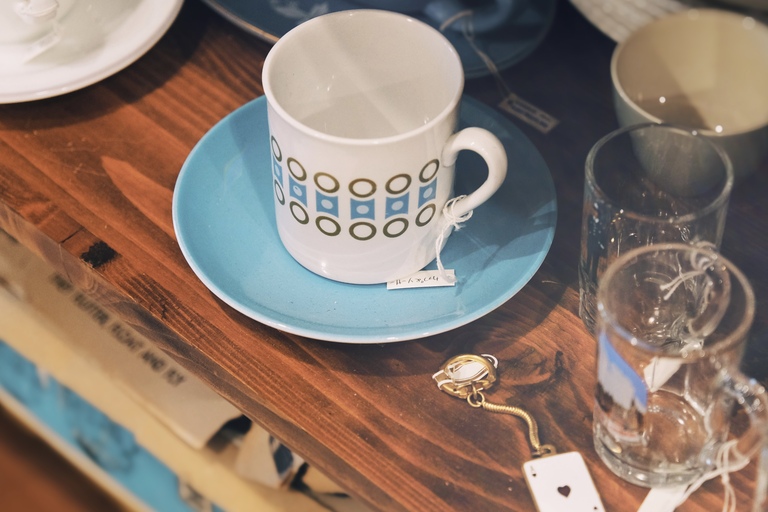
The items I found at the antique shop, c-h-o-c.
In my quest for the perfect coffee cup, I ventured to "Otsunaka-dori," just a stone's throw away from the lively Chinatown. Spanning 800 meters, this street boasts charming old buildings housing various shops, from clothing stores belonging to young Japanese designers to vintage cafes.
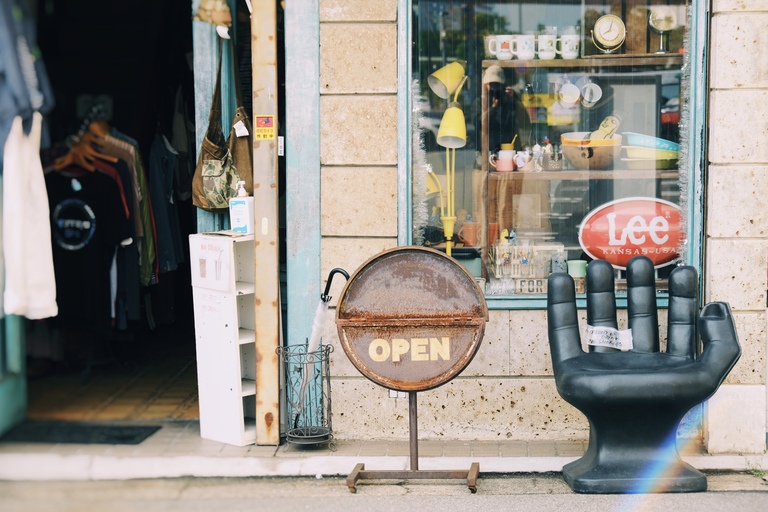
Entrance to one of the many shops on Otsunaka Street
I am excited to share the interesting story of Otsunaka-dori in my upcoming article. But for now, It is important to note that this area was once a hub for handling ship cargo by various companies, collectively called 'Otsu-naka.' This is why the street came to be known as 'Otsunaka-dori' or 'Otsunaka Street.'
The buildings on Otsunaka-dori, which once buzzed with maritime activity, are now repurposed for modern use, preserving another piece of Kobe's history. In the early 2000s, young entrepreneurs breathed new life into old buildings, opening trim, trendy shops. Since the rent fee was relatively small, the number of such shops rose yearly, allowing young people to start businesses.
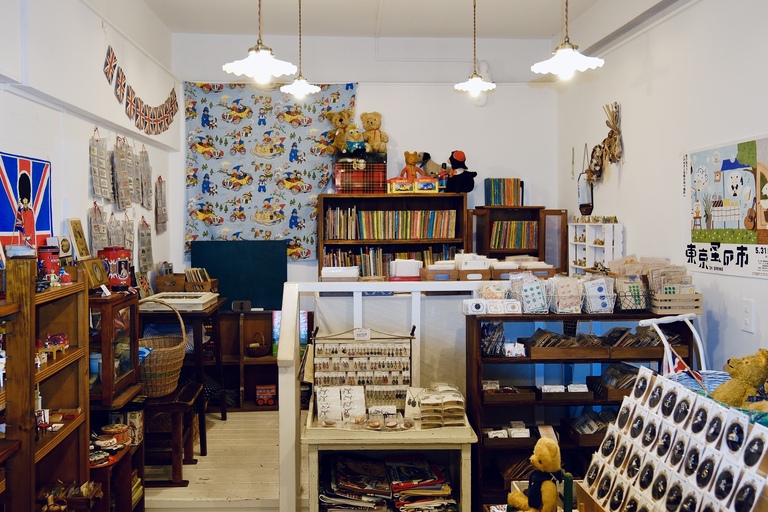
The interior of the antique shop c-h-o-c
Today, Otsunaka-dori is a vibrant mix of old and new, with its historic buildings housing stylish boutiques, cafes, and more. It's a testament to Kobe's resilience and ability to adapt to changing times. Stroll down Otsunaka-dori to experience the charm of Kobe's maritime history blended with contemporary flair.
In conclusion
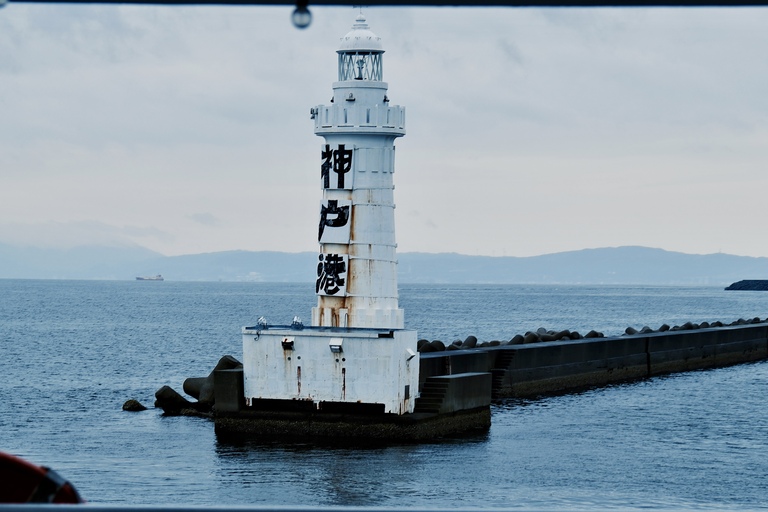
My exploration of Kobe has unveiled a city full of contrasts, from its picturesque landscapes to its rich cultural heritage. Every corner of Kobe has a unique story, intertwining history, culinary delights, and modern innovation.
Staying in Kobe for a night allows you to experience the city's vibrant nightlife and hospitality, making your visit even more memorable. But the journey doesn't end here. This dynamic city has so much more to uncover, inviting us to return and delve deeper into its hidden treasures! Stay tuned for further insights into Kobe's irresistible charm and the treasures that await in Hyogo Prefecture.
Date : 2024.05.31




